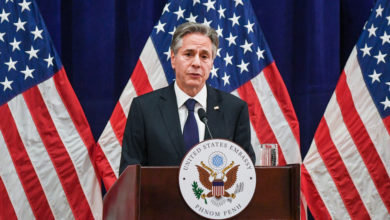CHIPS Act Could Help Auto and Electronics Shoppers

Itt’s been a difficult year for shoppers looking for cars, electronics and anything that requires a computer chip. A global semiconductor shortage has left many companies unable to fill orders or even finish products they’ve started assembling, clogging up warehouses and leaving a lack of inventory across the nation.
It is almost impossible to buy a brand new PlayStation 5 console. Many automakers have had to slow down their production, causing delays in shipments. It’s even impacted more obscure products—just try to find an affordable dog washing booth these days. The pandemic that shook the semiconductor supply chain in the world two years ago still affects the chip manufacturers who make these chips.
Washington’s solution
With the approval of a package worth $52 billion this week, the Senate may provide relief. It will vote on legislation that provides tax credit and funding to domestic manufacturers and processors. The House could consider it before August recess if the Senate approves the bill as planned.
“We are overly dependent on other countries for chips,” Commerce Secretary Gina Raimondo told TIME on Tuesday while the Senate voted to limit debate on the spending package. “Chips are the most essential item in modern industrial equipment, medical technology and every piece of military equipment.”
Supporters of the bill claim that the increase in federal spending will spur domestic chip production. But consumers might not see these effects until years later when they are shopping for electronic products.
The semiconductor used to be an inexpensive component that was manufactured at a cost of only two cents in 1970s for many large tech and automotive firms. Today, the most significant obstacle to sales is these small electronic switches.
A iPhone 13 uses 60 semiconductors. For the PlayStation 5, it takes about 130. Javelin missile systems contain about 200 chips while advanced defense helicopters are equipped with over 2000. The problem is more severe for automobiles. About 8,000 microchips are contained in the Porsche Taycan. Even though the microchip shortage in global markets may have subsided after just two years, automakers and tech companies are working together to increase their control over raw material and chip supply.
Learn more Intel Announces Plans to Build a Massive Ohio Factory To Combat the Chip Shortage
This is the deeper issue
But with chips in the spotlight, many in the industry are warning lawmakers that the ongoing chip shortage can’t be solved by a sudden surge in government funding.
“It’s not really just a semiconductor chip shortage. That’s the end product,” says Michael Hochberg, the president of Luminous Computing, a California-based chip startup that develops light-based semiconductors for artificial intelligence. “It’s a semiconductor talent shortage, a semiconductor equipment shortage, and a semiconductor fabrication capacity shortage, too. It’s all of those things at once.”
Travis Kelly is the CEO of Isola Group, an Arizona company, and the chairman of Printed Circuit Board Association of America. To work every chip has to be embedded on one of those green printed circuit board. This circuit board requires laminate, copper foil, and fiberglass yarn.
“It used to be that semiconductor manufacturers could just assume that they would get these parts out of a catalog by FedEx and not worry about it,” Hochberg says. “It was like breathing the air outside. They didn’t worry about the availability of parts until about two years ago.”
“Unless we address the entire microelectronics ecosystem, we’re not truly securing our domestic supply chain,” Kelly says.

Joe Biden talks about the importance and necessity of passing the Chips Act, July 25, 2022.
Demetrius Freeman—The Washington Post/Getty Images
Security concerns for the nation
Kelly’s printed circuit board firm, Isola, is among the last American firms to manufacture printed circuit board laminate in the U.S. The materials needed to make that laminate—fiberglass yarn and copper foil in particular—are only made and sold by one supplier in the entire country. “It’s a single point of failure,” Kelly says. “Think about that for defense.”
Supply chain workers and lawmakers are raising alarm over the shortage of American-made semiconductor materials. Two decades ago, the U.S. produced over 26% of the world’s printed circuit boards. As more companies take advantage of tax incentives and low labor costs by operating abroad, this number has fallen to just 4%. China and Taiwan have been hotbeds of semiconductor and printed circuit board manufacturing. Their governments invested heavily in the production of chips and in building local sources for chemicals and other tools that would support an independent sector.
“There’s no more important strategic good than semiconductors,” Hochberg says, listing off examples that range from national security to artificial intelligence. “If we want to maintain a technical and strategic advantage for AI, information warfare and military systems, when these chips are at the heart of these systems, it’s going to be necessary to get ahead of this problem.”
Raimondo’s senior legislative advisor told TIME, “The national security concern of manufacturing semiconductors overseas has been an important aspect in getting Congress to pass the CHIPS Act.”
“People may not care where the printed circuit board comes from when they’re operating a toaster, but they do care about it for warfighters and military applications,” Isola’s Kelly says.
Today, only a few advanced semiconductor factories (also known as fabs) remain in America. A factory can be built for anywhere between $10 and $20 billion. It takes up to five to create a new one, given all the complicated equipment and chemicals that are required. It takes three months to transform all these materials into the final chip.
“It’s everything from silicon wafers, substrate, chemicals,” Raimondo says. “This stuff is not made in the United States, and it’s shocking.” Congress is hoping that the suppliers of all these parts will be incentivized to relocate to the U.S. once more fabs are built domestically—a primary goal of the CHIPS Act. “If TSMC builds a mega fab in Arizona, or if Intel builds a mega fab in Ohio, the whole ecosystem of talents and suppliers will develop [there],” Raimondo explains.
What’s next
According to some executives, the semiconductor shortage is expected to ease as manufacturers stock up on components and chips. South Korean chipmaker TSMC, the world’s largest contract manufacturer, warned of “excessive inventory” in the semiconductor supply chain that will take the rest of the year and beyond to rebalance. Not all semiconductor foundries have had the same fortune, but it’s a positive sign for the tech and automotive industries that depend on these chips.
Korean automaker Hyundai recently posted its best quarterly profit in eight years, and Swiss engineering company ABB, which relies on semiconductors to build industrial technology products, said it’s finally seeing relief in the supply chain after years of challenges. “We have now come to a situation where we have much better commitments from the suppliers,” ABB Chief Executive Bjorn Rosengren said in a July 21 earnings call.
If the CHIPS Act is approved, the White House as well as the Department of Commerce feel confident that U.S.-based chip companies will announce investment plans.
“It’s not very different from what you’re seeing in Germany and Italy, which have allowed themselves to become overly dependent on Russian oil and gas,” Raimondo says. “That could be the United States if we don’t take action now.”
Read More From Time





